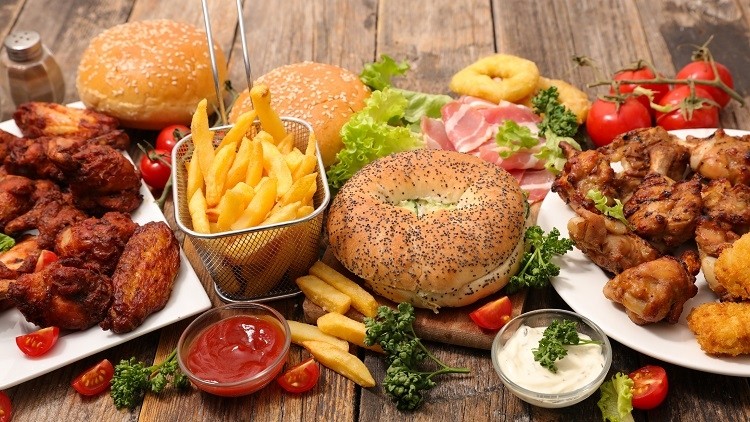
A BMI chart is something you have probably seen before. However, you might be unsure whether you should follow it. A BMI chart is a visual representation of a person's weight and height. This chart can give you an indication of your ideal weight and help you make informed weight decisions. The chart shows a person's height and weight in relation to their height and age. This is a quick way to calculate your BMI.
When looking at a BMI chart, find your weight in pounds on the top and your height in feet and inches down the side. Now, look across the chart and you'll find your BMI. The first chart should be used if your BMI is less than 245. The second chart should be used if your BMI is greater than 245. The BMI chart has shaded areas that indicate you are overweight. For example, if your BMI is in the 30s you are considered to be in class one. If you're in the 35-39.9 range, you're probably in class two, and if you're above 40, you're considered obese. If you are somewhere between these two levels, then you should go with the second.

As you can see, BMI is not an exact science. It's an imperfect measure, but it's an accurate reflection of a healthy weight. While it is not perfect, it is an effective tool for helping you make good decisions about your weight. A BMI chart will help you determine if you're obese or overweight and what you can do to get in shape.
People who are unable to use the calculator can use a BMI table. BMI calculations don't take into consideration your gender, sexuality, or pregnancy. This means that you may need to adjust the numbers for your specific needs. Your BMI isn't the only factor that should be taken into consideration when using a BMI calculator, but you should use it to make informed decisions. It is important to make informed decisions.
When using a BMI chart, remember that a higher number means that you are more likely to develop disease. The BMI chart is an excellent way to track your weight and height. It also helps you track your progress over time. With the help a BMI Chart, you can identify whether you are overweight or obese and then choose the best diet and exercise plan. You can consult your doctor to get a BMI chart.

A BMI chart is a great tool for parents to use. Children's BMI is different than that of adults, but it's still a good way to get a general idea of your child's weight. A healthy BMI for women is between 18.5 - 24.9 and a healthy weight in the range 18.5 - 24.9. Pre-pregnancy BMI is a useful tool for pregnant women to calculate how much weight she will gain.
FAQ
What's a good routine for a daily workout?
Regular exercise is key to staying healthy. No matter what kind of exercise you do, as long you do it consistently. Consistency is the key. You must be consistent if you are to see results.
Start by doing small amounts of daily physical activity (like walking). Start by walking for a few minutes every day. Gradually increase your time exercising to 30 minutes per week. This could be running, biking, swimming or weight training.
Try to get active every day. If you have a reason to miss a session, don't skim it.
If you exercise outside, ensure that you wear appropriate clothing and footwear. It is important to take into account the weather conditions, and how they may affect your ability to exercise safely.
Make sure that you drink plenty of water while you're exercising. Avoid drinking alcohol during this time because it can cause dehydration. Avoid caffeinated drinks, such as coffee, tea and cola. They may give you energy, but they will also dehydrate you.
When you first start exercising, you might feel tired after completing your workouts. If you stick with your training program, you'll feel more awake and alert.
How many times a week should I exercise?
It depends on how much time you have available and what type of exercise you prefer. You should do moderate-intensity aerobic exercise three to five days per week. It is important to not overdo it. For maximum results, consistent exercise is key to getting the most out of your workouts.
Which exercises are most effective for me?
It really depends on what kind of fitness goals you have. Some people concentrate on endurance activities such running, cycling, swimming. Some people enjoy lifting weights and using resistance bands. There are many types of exercise programs today. Find the best option for you.
How Metabolic Health is Key to Aging Well
Today's people live longer than ever before. However, people are getting sicker as they live longer. Despite making great progress in medical science, it is becoming more apparent that our current approach to medicine is not working.
We need to change how we think about health and aging. Healthy aging is possible only if we look at our metabolic health, not just weight loss, but also overall well-being.
Your metabolism must be strong and healthy to ensure you live an active lifestyle for many years to come.
The good news? There are many things you can do to improve your metabolism. One of those ways is to incorporate these 7 foods into your diet:
-
Blueberries contain resveratrol, which has been shown to help support cellular longevity. They are also rich in vitamins C & E and antioxidants.
-
Beans such as pinto beans and lentils provide excellent fiber and plant protein. These nutrients help keep blood sugar levels steady so they won't spike and crash.
-
Broccoli's sulforaphane has been shown to protect DNA from damage in research. It might even slow down the progression of cancer.
-
Chia seeds are rich in fiber and omega-3 fatty acid. They are high in protein and antioxidants. All of these nutrients are good for heart health, brain function, gut health, and overall health.
-
Green Tea contains polyphenols called caechins. Studies have shown that green tea contains catechins which are linked to lower bone fractures and cardiovascular disease. They also reduce cognitive decline and diabetes risk.
-
Salmonis a great source of lean protein. It is low in saturated fat and high in vitamin D.
-
Walnuts are rich in omega-3s as well as antioxidants such alpha lipoic acids (ALA). ALA helps boost energy production and protects against inflammation.
Can I go to the gym seven days a week?
You can go to your gym seven days a semaine, but not simultaneously. You must find a time you can do it without feeling exhausted and depleted.
This will keep you motivated and provide energy for other activities.
Also, ensure you eat healthy during these times. This will ensure you don't feel tired and sluggish when going to the gym.
And lastly, you need to ensure that there isn't anything else competing for your time. If you have children, it is a good idea to avoid going to school on the evenings as they can distract from your workout.
Do Men Need A Gym Membership?
For men, a membership to a gym is not required. But, if you do join a gym, it will make your money go further.
Most gyms offer free trial members, which allows you to use the facilities without paying anything.
You can use the gym at any time you want, and it doesn't cost anything. You can cancel your membership as soon as you decide whether you love or hate it.
What does butter do for men?
Butter is one of the best sources of saturated fats. This type of fat contributes to healthy skin, hair, and stronger bones.
Butter also contains vitaminK, which prevents bleeding after cuts and bruises. Vitamin K works together with vitamin C to prevent bruising.
Butter also contains minerals like calcium, phosphorous and potassium. These elements encourage stronger bones.
Butter has its limitations. Butter has high cholesterol. Research has shown that high levels of cholesterol could increase your chances of developing cardiovascular disease.
Butter is also high in saturated fat which can lead to obesity and higher cholesterol.
You can spread butter on bread if you are forced to use it. Bread absorbs more oil than potatoes or pasta.
Is weightlifting more effective at burning fat?
Weight lifting is a great way to burn fat faster but you need to do it together with cardio exercise.
You should do weightlifting after your cardio workouts to maximize its benefits.
Weightlifting, when done properly, increases your heart rate.
It is important to combine cardio with it, as you will not see significant changes in your body's composition.
Statistics
- An estimated calorie range for moderately active adult males falls between 2,200 to 2,800 calories per day, depending on age. (eatright.org)
- By John Thompson Take a whopping 38% off a set of PowerBlock Pros. (menshealth.com)
- Candidates and applicants must pass all four tests at 70% (minimum level) to graduate from Basic Deputy U.S. Marshal (BDUSM) Training. (usmarshals.gov)
- 10 pounds in a month is likely during a lean bulking phase, especially for beginners. (muscleandstrength.com)
- The PRS enabled risk stratification for overall prostate cancer and lethal disease with a four-fold difference between men in the highest and lowest quartiles (HR, 4.32; 95% confidence interval [CI], 3.16-5.89). (pubmed.ncbi.nlm.nih.gov)
External Links
How To
How can I burn fat while exercising?
Exercise burns calories through increased metabolism and oxygen consumption.
Moderate intensity exercise is a safe way to lose weight.
These are the top tips for burning fat while you exercise.
-
Do cardio exercises such as walking, swimming, jogging, cycling, running, or elliptical training.
-
Do 30 minutes of exercise three times a week.
-
You can lose weight by adding strength training to the routine.
-
Avoid intense workouts. You can build muscle without breaking down muscle tissue.
-
Keep hydrated during exercise. Water helps flush out toxins and keep your body properly hydrated.
-
After working out, drink low-fat protein shakes. Protein shakes are great for your muscles and energy.
-
You can eat smaller meals throughout the day so that you don't feel hungry in between meals.
-
Don't skip breakfast! Skipping breakfast can make you tired and sluggish.
-
Mental health is important. Stressful situations can affect your metabolism.
-
Keep a positive attitude. Studies have shown that people who are convinced they are overweight gain more weight than those who feel they look attractive.
-
Get enough sleep. Insufficient sleep can make it more difficult to lose weight.
-
Be active. Keep moving every hour.
-
Maintain a healthy diet. Eat right to feel satisfied and full for longer.
-
Find ways to relax. Your body won't release stress hormones that cause muscle tissue destruction if you have a tense mind.
A balanced diet provides all the nutrients necessary for growth and development.
Eat six small meals each day instead of three large ones. This gives your body the time it needs to process what you've eat.
Calcium is required to support strong bones. Calcium can also be found in milk products, yogurt, fortified Soy beverages, orange Juice, cereals and bread.
Calcium is found in leafy green vegetables and beans, tofu as well as nuts, seeds, cheese, and seeds.
Vitamin D is required for calcium absorption. Vitamin D is found in certain fortified foods, such as egg yolk and fatty fish.
Vitamin E plays an important role in skin health. It can be found as a vegetable oil, wheat germ, peanuts or almonds.
Your body requires zinc to function normally and for wound healing. Zinc is found in seafood, oysters legumes meats, whole grains, whole grains and meats.
Zinc deficiencies can lead to fatigue, decreased appetite, depression, and reduced immunity.
Too much sugar leads to insulin resistance. This results in higher blood glucose levels. Insulin resistance leads to weight gain.
Insulin resistance develops when there are high levels of free radicals in the bloodstream. Free radicals are molecules that have unpaired electrons, which can cause damage to cell membranes or other parts of your body.
Free radicals come mainly from food additives, pesticides, herbicides, preservatives, smoking, air pollution, radiation, chemicals in cosmetics, lotions, and household cleaning supplies.
Free radical damage may lead to cancer, heart disease diabetes, arthritis, asthma and other conditions.
Eating a well-balanced diet with antioxidants is the best way to prevent free radical damage. Antioxidants protect against oxidative damage.
Vitamin C can be found in citrus fruits. Beta carotene can be found in carrots. Sweet potatoes. Tomatoes. Carrots. Sweet potatoes. Spinach. Broccoli. Cantaloupe. Vitamin E is found in nuts. Olive oil, avocados.
Selenium, copper and manganese are all antioxidant nutrients.
Selenium helps protect cells from oxidative damage caused by free radicals. Selenium can be found in Brazil nuts and liver, kidneys, liver, kidneys, shrimp, cod, turkey and lamb as well as chicken.
Copper protects the eyes, brain, lungs, liver, and red blood cells. Copper can be found in shellfish and poultry as well as meat and organ meats.
Manganese, an essential component of bone strength, is crucial. Manganese is found as a component of bone structure in brown rice (spinach, bananas), prunes, raisins and oatmeal.
Zinc is essential for normal growth, reproduction, wound healing, and average growth. Zn can also be found in white fish, lean cuts of meat, poultry, and eggs.